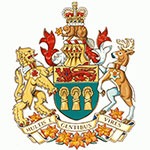About the Court
Court of King's Bench | SaskatchewanCourts of Saskatchewan
About the Court
Court of King’s Bench
The Court of King’s Bench consists of the Chief Justice, an Associate Chief Justice, and 36 other judges. King’s Bench judges are appointed by the federal government.
There are ten permanent Court of King’s Bench judicial centres in Saskatchewan.
- Battleford, SK
- Estevan, SK
- Melfort, SK
- Moose Jaw, SK
- Prince Albert, SK
- Regina, SK
- Saskatoon, SK
- Swift Current, SK
- Weyburn, SK
- Yorkton, SK
Seven of the ten have one or more resident King’s Bench Justices. A resident judge spends the majority of his or her time in their home judicial centre. However, because the Court of King’s Bench is an itinerant court, the judges also travel to and sit in other judicial centres. This allows the Court to effectively use court facilities and to ensure that no judicial centre experiences a backlogged caseload.
The Family Law Division of the Court of King’s Bench operates in the Judicial Centres of Saskatoon, Regina and Prince Albert. The Family Law Division hears all family law matters relating to divorce, custody and access, property division and maintenance enforcement.
The Justices assigned to the Family Law Division spend the majority of their time hearing matters within that Division, but they also hear other matters that come before the Court. Similarly, the other Justices of the Court, on occasion, hear Family Law Division matters.

History of the Court
Court of King's Bench | SaskatchewanHistory
In 1901, the population of what was to become Saskatchewan was just over 91,000. Five years later, that number had almost tripled and the new province had almost 258,000 people. Saskatchewan’s first government, under Premier Walter Scott, had the task of developing the infrastructure and programs the province needed.
One of those tasks was developing a court system separate from that of the Northwest Territories. The Court of the Northwest Territories continued to serve Saskatchewan after it became a province until The Judicature Act was passed in 1907. It abolished the authority of the Court of the Northwest Territories in the province and created the Supreme Court of Saskatchewan, the predecessor of today’s Court of King’s Bench.
The Supreme Court of Saskatchewan in 1907 included one Chief Justice and four other justices. In 1907, there was no Court of Appeal in Saskatchewan, so the judges of the Supreme Court sat en banc to hear appeals, where any three judges constituted a quorum, with the judge who made the original decision barred from being involved with the appeal.
The first case the Supreme Court of Saskatchewan ever tried was His Majesty the King v. Alfred Kopperud. There was nothing particularly spectacular or unusual about Kopperud except that it was the first case tried by the first court in Saskatchewan. The charge was fraud; Mr. Kopperud allegedly wrote a letter complaining about the local postmaster and signed it with the name of another individual in the community. The forged letter complained about the local postmaster and suggested that Mr. Kopperud would be a desirable man to replace him. The end result of the first issue that arose before the Supreme Court of Saskatchewan was the Attorney General directing a stay of proceedings against Mr. Kopperud and the first case to be dealt with by a Saskatchewan court fading into obscurity.
The ‘Modernization’ of Saskatchewan Courts
The Court of King’s Bench was now a court of solely original jurisdiction. The appellate jurisdiction belonged to the Saskatchewan Court of Appeal. With these changes, Saskatchewan’s court system took on a structure comparable to the province’s contemporary court system.
The drafters of The King’s Bench Act had the foresight to recognize that in the reign of a queen, the name of the court would have to become the Court of Queen’s Bench, and provided for this eventuality in the Act. Thus for many years, under the reign of Queen Elizabeth II, the court was known as the Court of Queen’s Bench.
